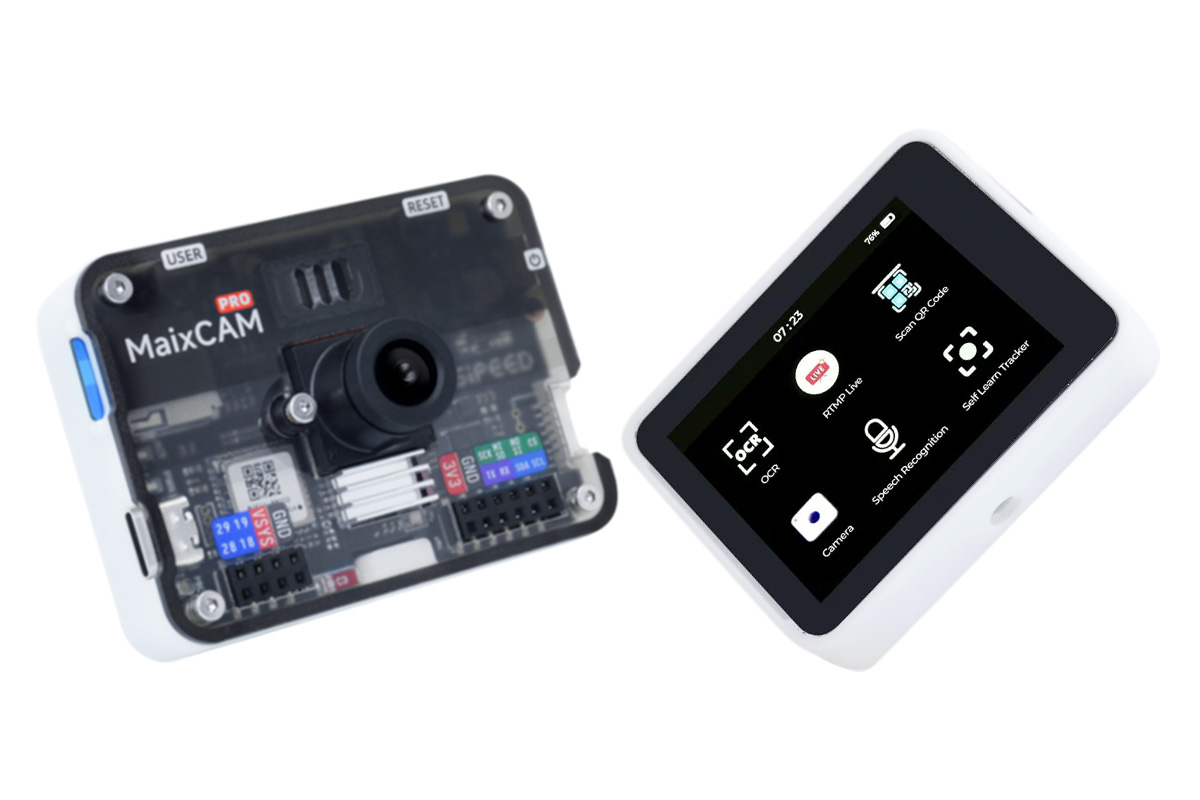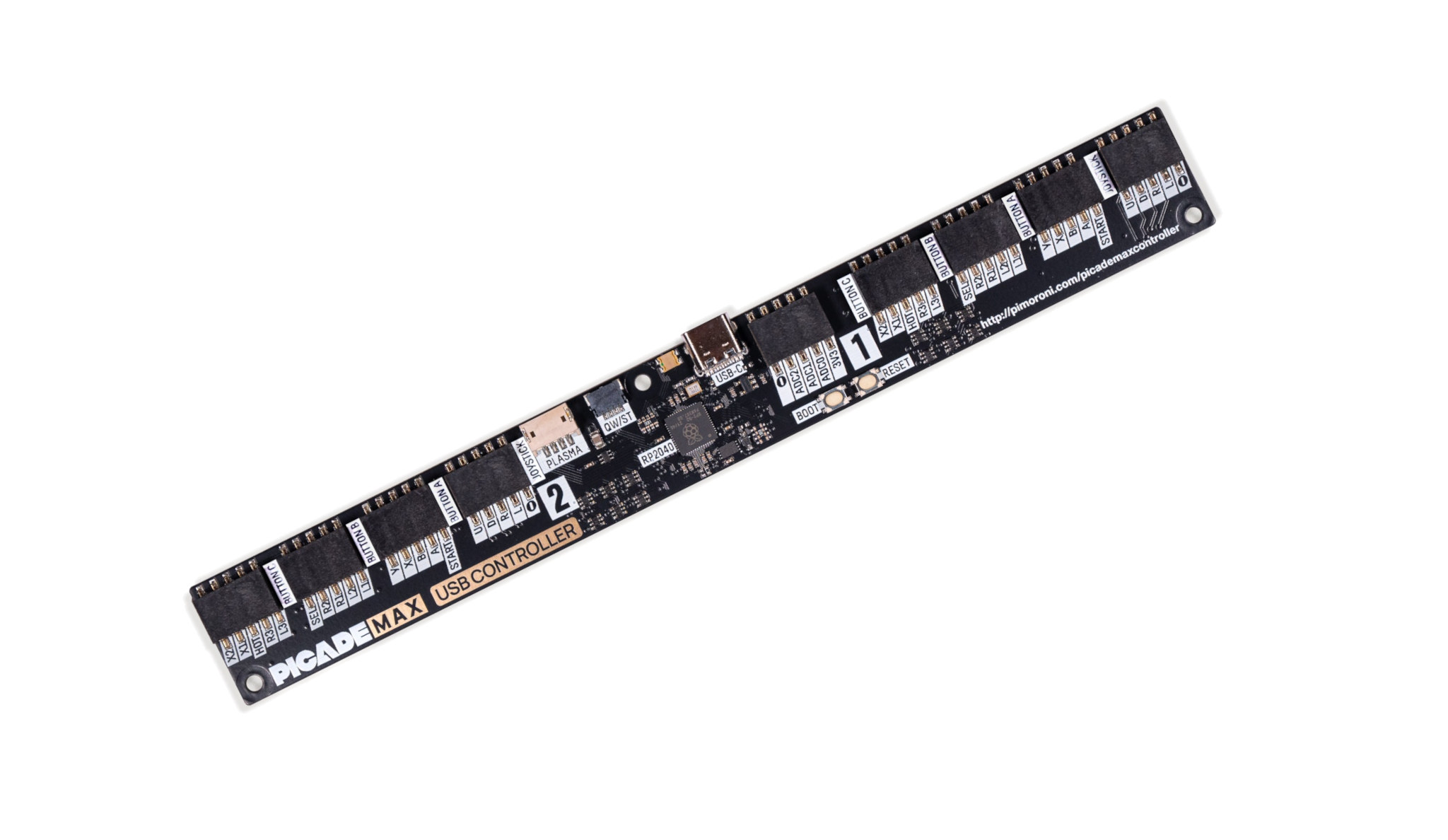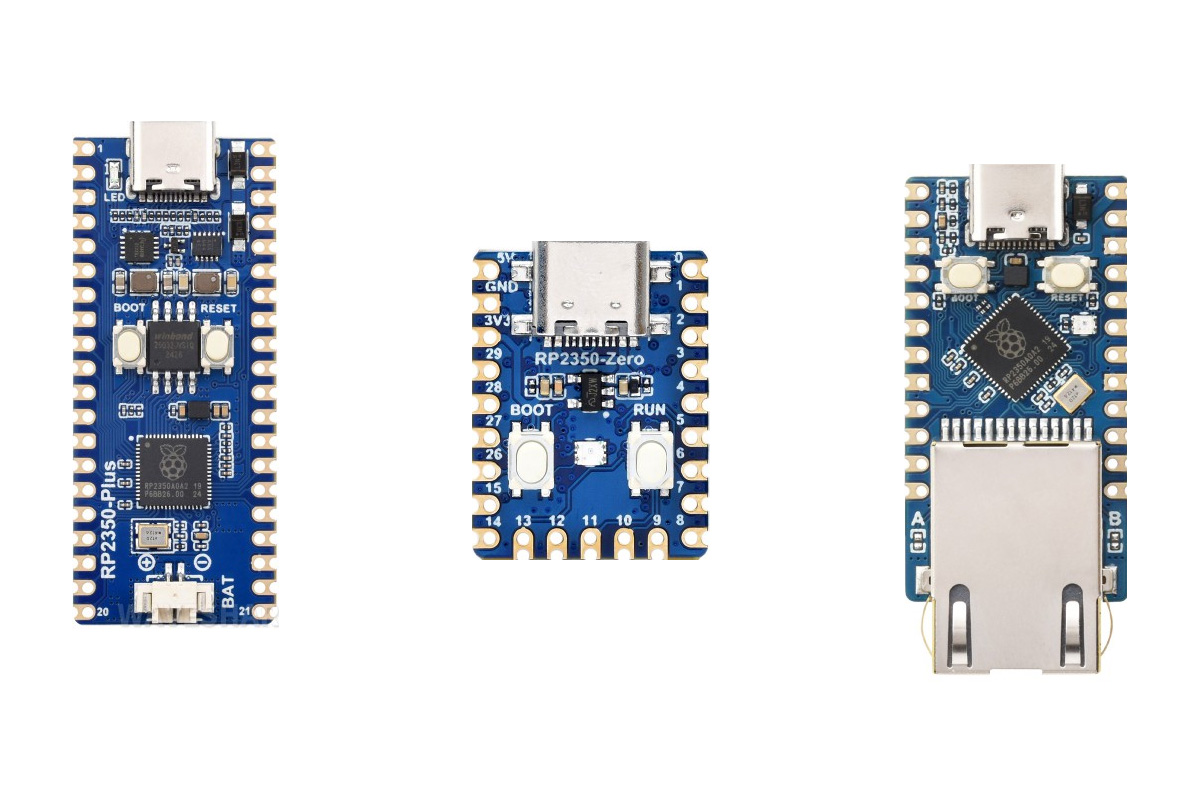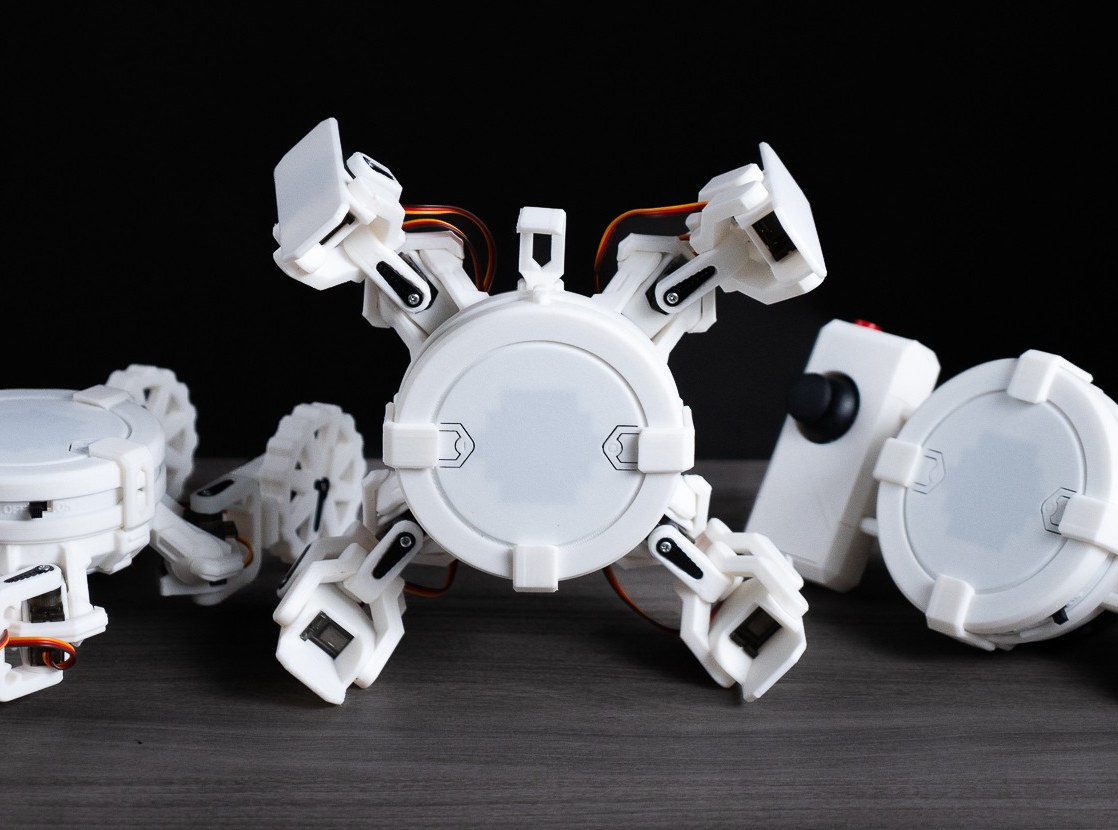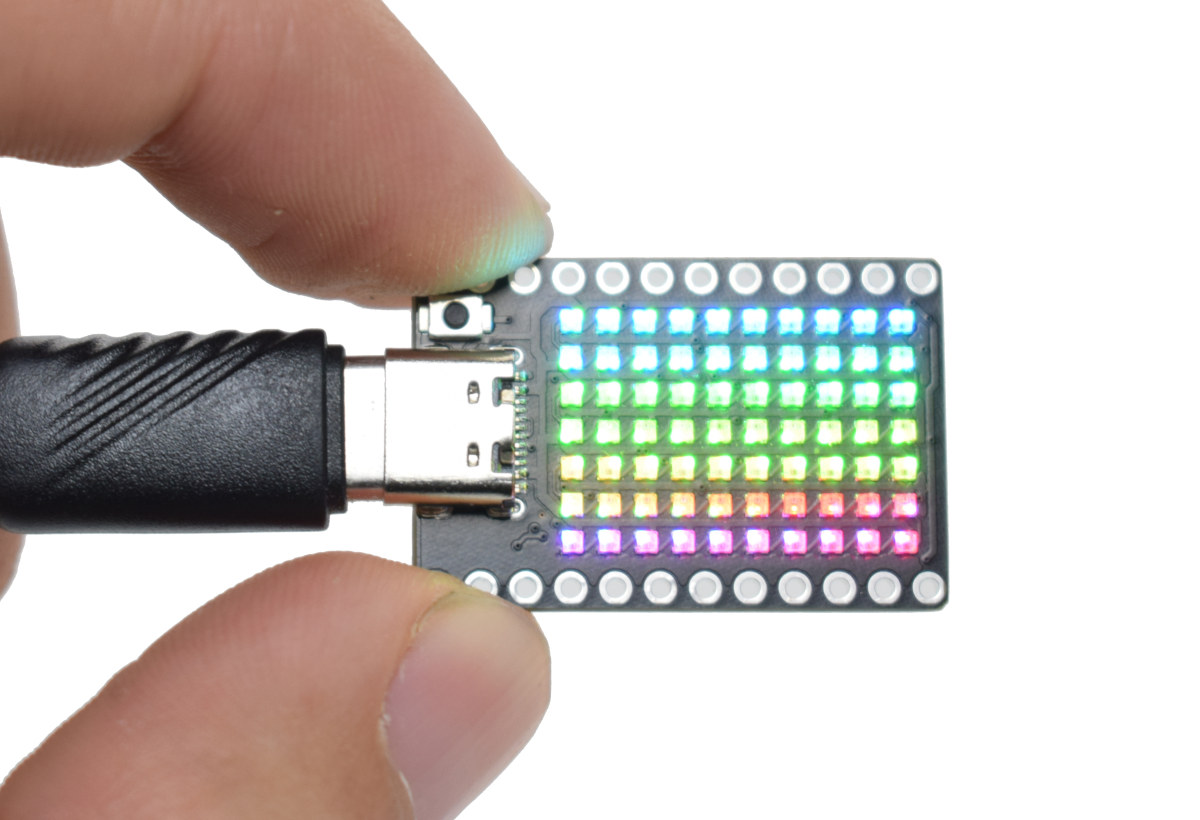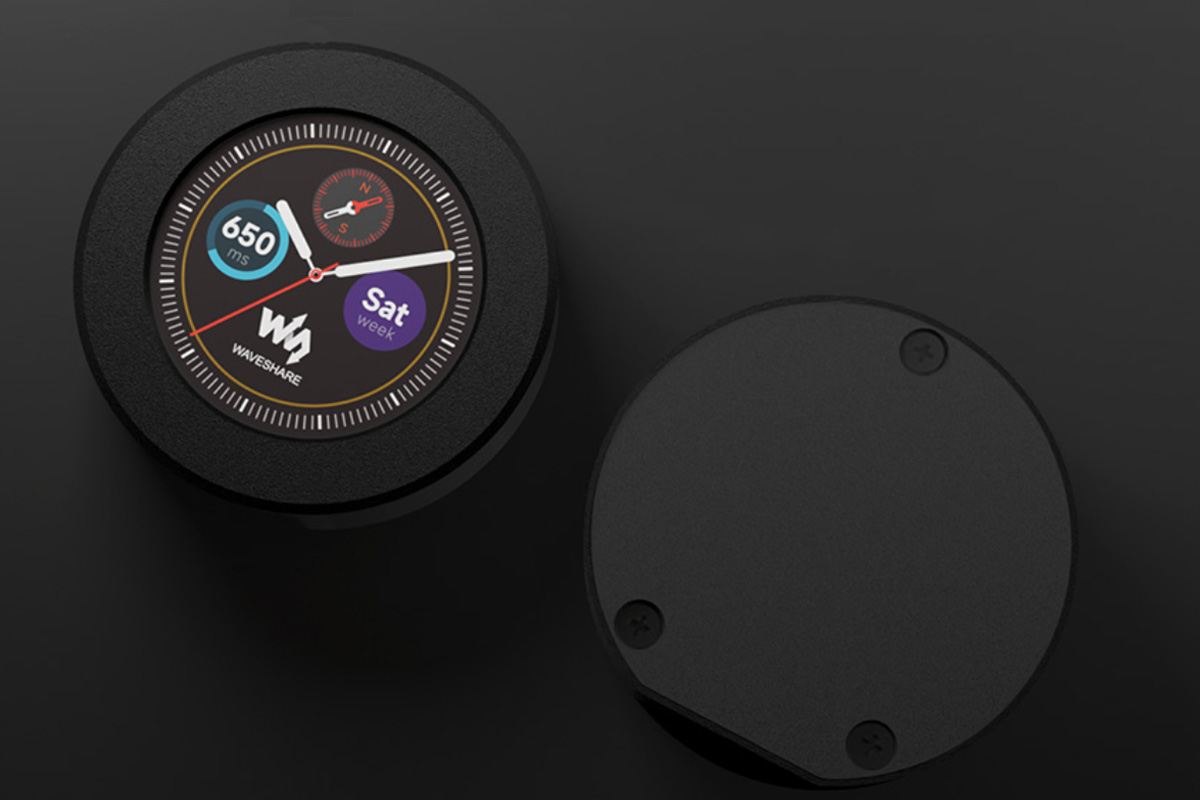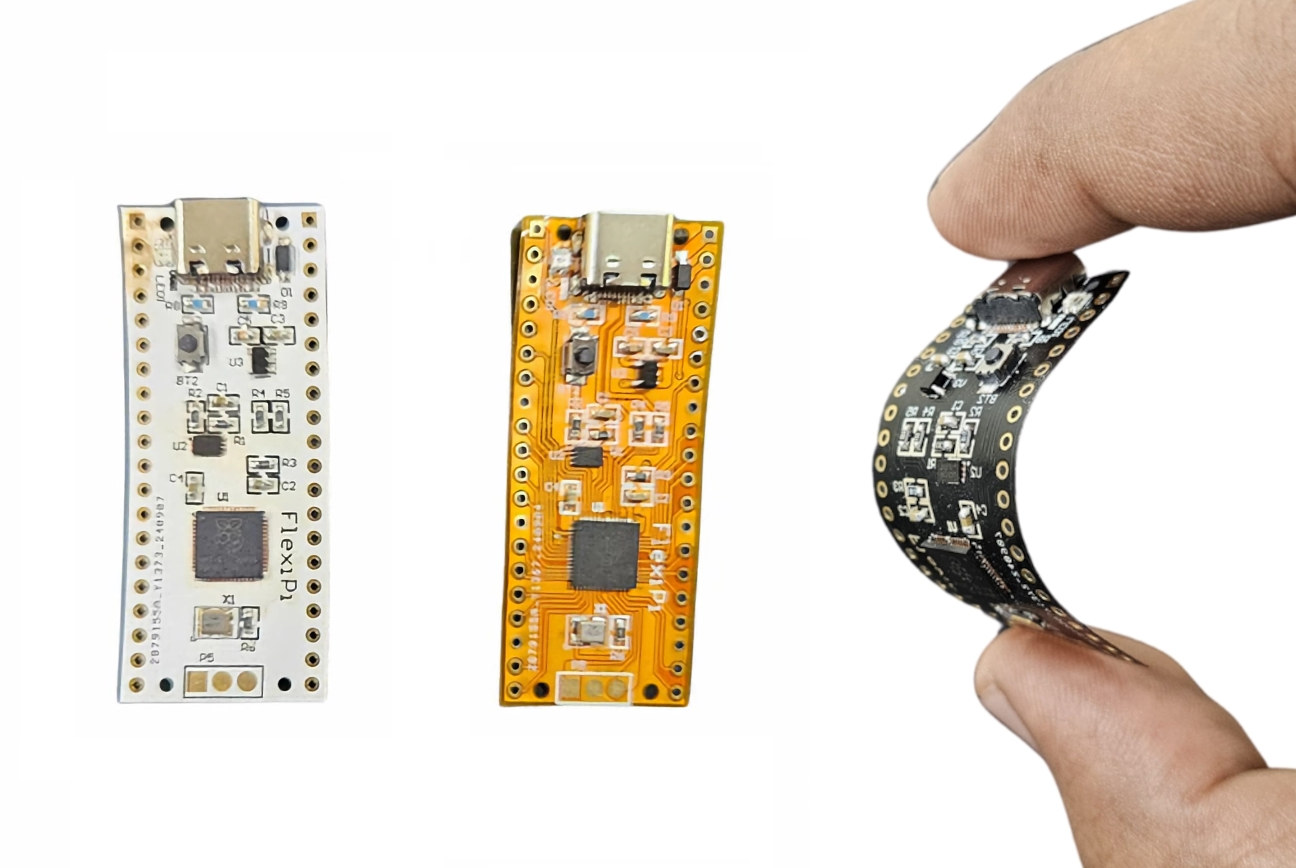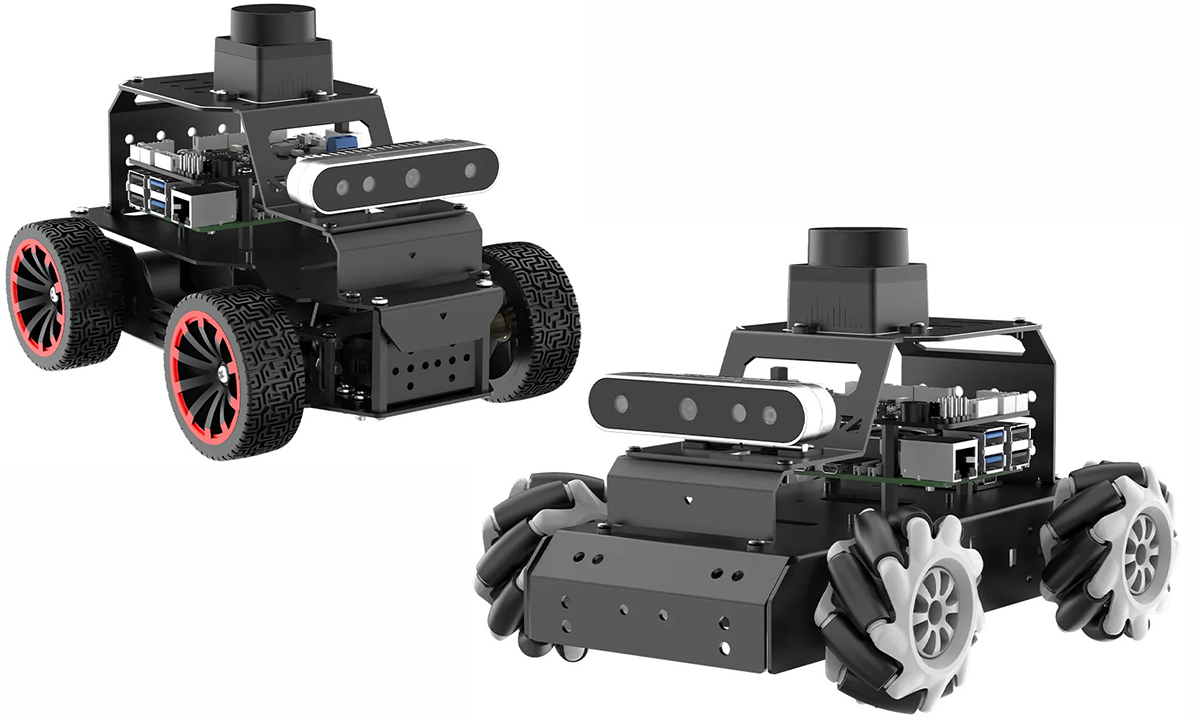Sipeed has recently released the MaixCAM-Pro AI camera devkit built around the SOPHGO SG2002 RISC-V (and Arm, and 8051) SoC which also features a 1 TOPS NPU for AI tasks. The module includes a 2.4-inch color touchscreen and supports up to a 5MP camera module. Other features include WiFi 6, BLE 5.4, optional Ethernet, built-in audio capabilities, a PMOD interface, GPIOs, and more. Additionally, it features an IMU, RTC chip, and AXP2101 power management for enhanced performance. The module is designed for AI vision, IoT, multimedia, and real-time processing applications. Just a few months back, Sipeed introduced the MaixCAM AI camera devkit, which is also built around the SOPHGO SG2002 RISC-V SoC. The new module improves on the MaixCAM with a redesigned PCB, upgraded casing, and various new features including a 2.4-inch IPS touchscreen (640×480), a 1W speaker, expanded IO interfaces, a power button, and an illumination LED. It also […]
Picade Max USB Controller board supports two joysticks and up to 30 arcade buttons
Pimoroni Picade Max USB Controller is a Raspberry Pi RP2040 board designed for arcade game consoles with support for two joysticks and up to 30 buttons through standard DuPont socket connectors and one Plasma button connector. The board comes with a 2MB QSPI flash for the firmware, a USB-C port for power and programming, one of DuPont socket connectors exposes three ADC inputs, 3.3V, and GND, and there’s also a Qwicc/Qt STEMMA connector for I2C module expansion, plus BOOT and RESET buttons for programming. Picade Max USB Controller specifications: Microcontroller – Raspberry Pi RP2040 dual-core Arm Cortex M0+ MCU @ 133 MHz with 264kB of SRAM Storage – 2MB QSPI flash supporting XiP USB – 1x USB Type-C port for power and programming User inputs DuPont socket connectors 2x 4-way joystick inputs 30x arcade button inputs Plasma button connector Expansion Qw/ST (Qwiic/STEMMA QT) connector for I2C modules 3x ADC […]
Waveshare launches three RP2350 USB-C development boards with castellated design, battery support, built-in Ethernet port
Waveshare has announced four new USB-C and USB-A development boards based on the Raspberry Pi RP2350 MCU: the Waveshare RP2350-Plus dev board, the Waveshare RP2350-Zero Mini dev board, the Waveshare RP2350-ETH Mini dev board, and the Waveshare RP2350-GEEK USB dev board. The RP2350-Plus is a low-cost, high-performance Pico-like development board with the RP2350 MCU, various I/O, battery support, USB Type-C, and compatibility with Raspberry Pi Pico modules. The RP2350-Zero Mini is another compact dev board with castellated pins, 29 GPIOs, USB Type-C, PIO, and versatile peripheral support, ideal for IoT, robotics, and embedded systems. The RP2350-ETH Mini dev board has Ethernet support and various GPIO functionalities, making it ideal for IoT development. Like any other RP2350 board, the Waveshare RP2350 boards support C/C++ and MicroPython SDKs with drag-and-drop firmware flashing via USB mass storage. Waveshare RP2350-Plus development board The Waveshare RP2350-Plus is a low-cost development board that comes in a […]
CYOBot v2 ESP32-S3-based open-source modular robotics platform supports up to 16 servos (Crowdfunding)
Create Your Own Bot (CYOBot) v2 is an open-source, modular robotics platform for students, educators, hobbyists, and future engineers based on the ESP32-S3 microcontroller and featuring up to 16 servo motors for complex control. The CYOBot v2 is a follow-up to the previous quadrupedal robotic platform from the same company. It adds new features such as a modular design, an upgrade to the ESP32-S3 chip, more motor channels, and an expansion block with more peripherals. It also supports integrating AI systems, such as ChatGPT, for added functionality. The CYOBot supports up to three configurations via the CYOBrain — which powers the robotics platform and controls the servo motors — and separate 3D-printed components. The CYOBot Crawler is a four-legged robot powered by eight 180-degree servo motors. The CYOBot Wheeler form factor features four 360-degree motors linked to wheels at the end of each leg and is essentially a hybrid between […]
Nova open-source hardware Raspberry Pi RP2040 board features a 70 RGB LED matrix (Crowdfunding)
Vcc Labs’ Nova is a tiny, open-source hardware Raspberry Pi RP2040 development board with a USB-C port, a 70 (7×10) addressable RGB LED matrix, and two 12-pin GPIO headers for expansion. It can be used for wearables, mini-displays, interactive art, fun games, and more. Nova specifications: MCU – Raspberry Pi RP2040 dual-core Cortex-M0+ microcontroller @ up to 133 MHz with 264KB SRAM Storage – 2MB QSPI flash “Display” – 7×10 WS2812 addressable RGB LEDs, each measuring just 1x1mm USB – USB Type-C port for power, data, and programming Expansion – 2x 12-pin header with 20x GPIO, 2x SPI, 2x I2C, 2x UART, 4x ADC, Vin, 5V, 3.3V, and GND Misc – Reset and BOOT buttons Power Supply 5V via USB-C port 7V to 18V via Vin pin Power consumption – 9 Watts with all LEDs at full brightness Dimensions – 30.48 x 20.32 mm (PCB only) Weight – 4.76 grams […]
1.28-inch round color display features Raspberry Pi RP2350, motion sensor, GPIO headers, metal case
Waveshare has recently launched the RP2350-LCD-1.28, a Raspberry Pi RP2350-based 1.28-inch round color display module with 240×240 pixel resolution and a 65K-color IPS panel. This board also features a rechargeable Lithium battery manager, a 6-axis IMU with a 3-axis gyroscope and accelerometer, multiple GPIO pins, and a USB Type-C connector for programming and power. Additionally, it supports USB 1.1 host/device support, temperature sensor, and 24 PWM channels, all configured for flexible I/O options. These features make this device useful for IoT, wearable tech, and embedded applications. The company also provides an optional CNC metal casing that provides durability and heat dissipation for portable or rugged applications. We have previously covered similar development boards with a round display such as the RP2040-powered 0.99″ rounded display, the ESP32-S3 LCD Driver Board, the SB-Components has launched Dual Roundy, and others, but it’s the first to feature the RP2350 microcontroller. RP2350-LCD-1.28 specification: Microcontroller – Raspberry Pi […]
FlexiPi is a bendable Raspberry Pi Pico clone made of flexible PCB (Crowdfunding)
FlexiPi is a bendable Raspberry Pi RP2040 board made of flexible PCB with the same layout as the original Raspberry Pi Pico, but featuring a USB-C port instead of a micro USB port on the official board. This follows the Flexduino flex PCB clone of the Arduino UNO made by “EDISON SCIENCE CORNER”, but the smaller design of “TOP Gadgets” FlexiPi may make it potentially more useful since it could be inserted into tight or round enclosures. FlexiPi specifications: MCU – Raspberry Pi RP2040 dual-core Cortex-M0+ microcontroller @ 48 MHz (overclockable to 133 MHz) with 264KB SRAM Storage – 2MB QSPI flash USB – 1x USB Type-C 1.1 port used for power and programming Expansion 2x 20-pin 2.54mm pitch header and castellated holes with 26 GPIOs, 3x 12-bit ADC up to 500 Kbps, 2x UART, 2x I2C, 2x SPI, 16x PWM, 2x programmable high-speed I/O 3.3V I/O voltage Sensor – […]
MentorPi is a ROS2-compatible, Raspberry Pi 5-based robot car with Mecanum or Ackermann chassis
MentorPi is a ROS2-compatible robot car powered by the Raspberry Pi 5, designed for AI-driven robotics and Python programming. It offers two chassis options: MentorPi-M1, which features a Mecanum-wheel chassis, and MentorPi-A1, equipped with an Ackermann chassis. Both variants come with high-performance components such as closed-loop encoder motors, STL-19P TOF lidar, 3D depth cameras, and high-torque servos. These enable precise navigation, SLAM mapping, path planning, and dynamic obstacle avoidance, making MentorPi an ideal platform for robotics tasks. The system utilizes a dual-controller architecture to optimize performance. The Raspberry Pi 5 handles AI vision processing and strategic functions, while Hiwonder’s RRC Lite expansion board manages motion control and sensor data processing. This task distribution enhances efficiency in machine vision, AI-powered navigation, and robotic control, allowing MentorPi to tackle complex AI and vision-based applications with ease. MentorPi also supports advanced features like 3D visual mapping and YOLOv5-based object detection for recognizing road […]


